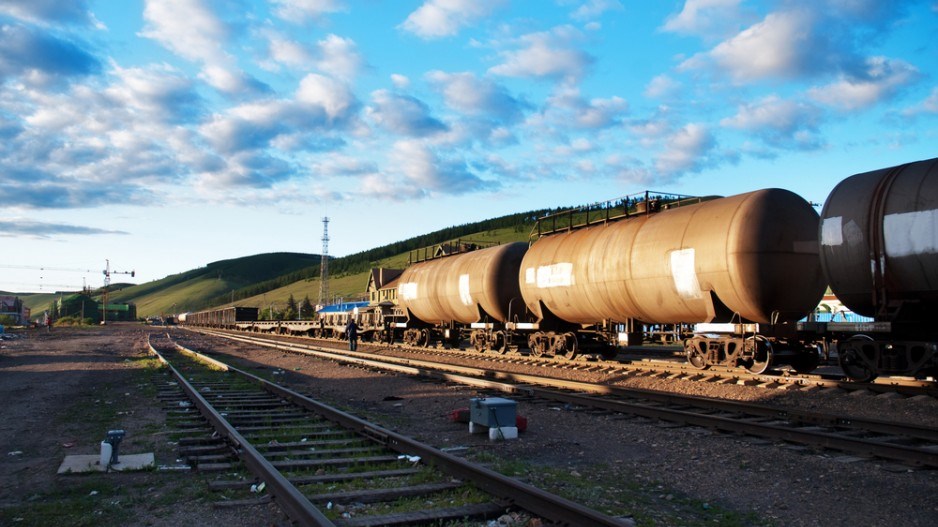The Chevron Burnaby Refinery, which is competing with U.S. customers for Alberta oil, has had its application for a priority destination for Trans Mountain pipeline oil rejected by the National Energy Board.
The ruling means Chevron will have to continue to supplement its supply of crude oil by rail and truck – something it has had to increasingly rely on since 2010.
The refinery needs 55,000 barrels of oil per day, and used to get most of it from the Trans Mountain pipeline. But in 2010, the pipeline was apportioned, with all customers being cut back, as demand outstripped supply.
Chevron now receives only about 33,000 barrels per day from the Trans Mountain pipeline. The rest comes mostly through a combination of rail and truck tankers.
In May, Chevron began shipping crude by rail directly to the refinery – about 6,500 barrels per day. It gets about 1,000 barrels per day by truck, but that too comes by rail initially, before it is offloaded in Langley and trucked to Burnaby.
“For all intents and purposes, it’s all rail,” Ray Lord, Chevron Burnaby Refinery’s public and government affairs spokesman, told Business in Vancouver.
Kinder Morgan wants to twin its Trans Mountain pipeline, increasing its capacity from 300,000 barrels of oil per day to 750,000, with more than half of the oil earmarked for export.
Chevron had hoped a priority destination designation would ensure it receives more oil via pipeline, which would have been granted if Chevron could prove it was unable to get oil from other sources economically. But the NEB ruled it didn’t meet the criteria.
“Among other reasons, the board observed that Chevron had consistently met its 40,000 bpd minimum run rate using the existing options in its supply portfolio,” the NED ruled. “The board was of the view that it is the responsibility of Chevron to design a portfolio of supply options that will best mitigate its supply risk and ensure the long-term viability of the Burnaby Refinery.”
The Trans Mountain pipeline provides 80% to 90% of the Lower Mainland’s gas, diesel and jet fuel. Chevron supplies 25% to 30% of the Lower Mainland’s gas and diesel.
When it can’t get enough crude for its needs from the Trans Mountain line, it has to bring it in by truck from Alberta and Manitoba.
“We are disappointed with the NEB ruling,” Lord said, “and the result is we will need to continue to identify supplementary sources of crude for the refinery.”
But because of the disaster in Lac-Mégantic, Quebec, in which 50 people are believed to have been killed, shipping oil by rail is not only getting more scrutiny, it also promises to get more expensive.
On Thursday, Moody’s predicted increased regulations resulting from the disaster will likely drive up costs for both oil producers and railway lines.




